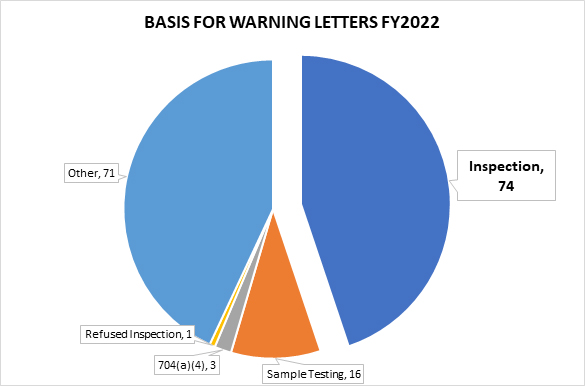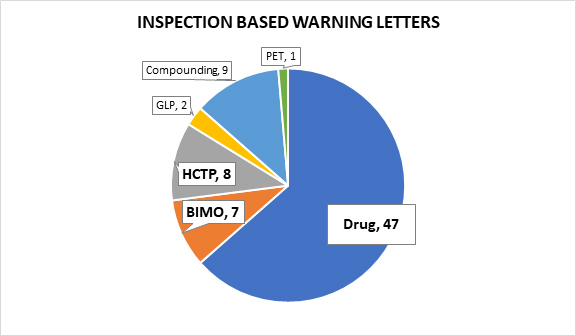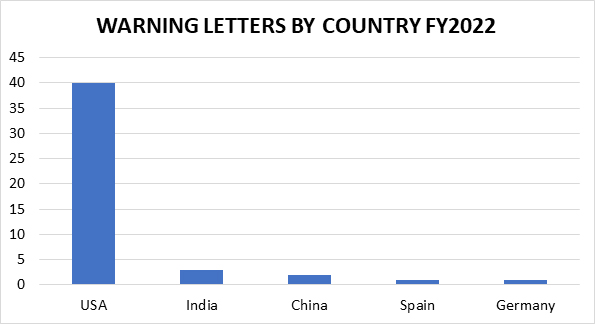This article originally appeared in the Food and Drug Law Journal and is available here via Open Access.
Abstract
A recent Third Circuit Court of Appeals decision in United States v. Vepuri has the potential to undermine the legal framework for drug approvals in the United States. Specifically, this decision could shield copycat products from U.S. Food and Drug Administration (FDA) enforcement action and allow them to enter the market without FDA pre-approval. The loophole created by this decision is accompanied by concerns about product quality, patient safety, and other issues that would be flagged in a premarket review.
I. Introduction
The ongoing U.S. Fifth Circuit Court of Appeals litigation challenging the U.S. Food and Drug Administration’s (FDA’s) approval of mifepristone has generated a great deal of attention and concern about the implications for FDA drug approval decisions.1 This Article discusses a recent decision by the U.S. Court of Appeals for the Third Circuit that has generated far less attention but also has the potential to undermine the legal framework for FDA drug approvals. The Third Circuit’s decision in United States v. Vepuri2 potentially allows any firm manufacturing a copycat drug to market it without FDA approval and without fear of FDA enforcement action under 21 U.S.C. § 355(a), provided the copycat has the same chemical composition and labeling as a drug specifically approved by FDA pursuant to a new drug application (NDA) or an abbreviated new drug application (ANDA).
II. Background
In July, the Third Circuit Court of Appeals upheld an earlier decision of the district court to dismiss part of a criminal indictment against KVK-Tech, Inc. (“KVK-Tech”) and two KVK-Tech executives (Murty Vepuri and Ashvin Panchal) on the grounds that the conduct alleged in the indictment did not constitute an offense under 21 U.S.C. § 355(a).3 As further discussed below, § 355(a) prohibits a person from introducing a “new drug” into interstate commerce without an effective application in place.4
KVK-Tech manufactured hydroxyzine, a generic prescription drug indicated for the treatment of anxiety and tension.5 KVK-Tech had three approved ANDAs to market different strengths of hydroxyzine.6 Contrary to the ANDAs, KVK-Tech had been introducing hydroxyzine into interstate commerce that KVK-Tech had manufactured using active pharmaceutical ingredient (API) sourced from a facility in Mexico that was not listed in the ANDAs or otherwise approved by FDA.7
KVK-Tech had stated in its ANDAs that the hydroxyzine active ingredient would be sourced from a UCB Pharma, S.A facility in Belgium.8 In 2008, two years after the initial approvals, Panchal appropriately filed an application supplement and obtained approval to source the active ingredient from a different company, a Cosma, S.p.A facility in Italy.9 Despite having two approved options for sourcing API, in October 2010, Vepuri authorized the purchase of three shipments of active ingredient from a Dr. Reddy’s Laboratories (DRL) facility in Mexico not listed in the approved ANDAs.10
FDA only discovered this unauthorized API substitution in June 2013, when it refused to permit a fourth shipment of DRL API to enter the United States on the grounds that KVK-Tech’s ANDA did not list the DRL facility as an approved API source.11 By that time, however, KVK-Tech had already received the three prior shipments of API from DRL’s Mexico facility, which the government alleged was used to manufacture 368,000 bottles of hydroxyzine KVK-Tech distributed to customers.12
Following the border refusal, FDA inspected KVK-Tech, and Panchal made several false statements to FDA about where KVK-Tech was sourcing its API. For example, during a 2013 inspection, Panchal told FDA investigators that KVK-Tech had not received prior shipments of API from Mexico.13 When confronted with photographs to the contrary, Panchal indicated that he was not aware that UCB (the approved API manufacturer) shipped API from Mexico.14 In several communications with FDA during and after the 2013 inspection, Panchal and Vepuri falsely blamed the use of the unapproved DRL API on the incompetence of a former employee and made other false statements to FDA.15
As further discussed in the underlying district court decision, FDA had issued a warning letter to DRL’s Mexican facility for violations of Current Good Manufacturing Practices (CGMP) in June 2011.16 The warning letter was based on violations discovered during an FDA inspection of the DRL facility conducted in November 2010, and was unrelated to the API shipments to KVK-Tech.17 The CGMP violations were serious enough that, the following month, FDA also placed the facility on import alert, thereby authorizing the detention of all DRL API shipped to the United States.18 The three shipments of DRL API utilized by KVK-Tech in the hydroxyzine it distributed occurred in January, March, and May of 2011, shortly before the import alert was issued in July 2011.19 The import alert remained in effect until July 2012.20
The defendants were indicted on several offenses. One of the offenses was a criminal conspiracy with several identified objects (or goals) of the conspiracy, including “with the intent to defraud and mislead, introducing or delivering for introduction, and causing the introduction or delivery for introduction, into interstate commerce of unapproved new drugs in violation of Title 21 United States Code, Sections 331(d) and 355(a)[.]”21 The district court struck down this portion of the indictment, and the Third Circuit upheld that decision.22
III. Decision by the Third Circuit
The Third Circuit’s ruling hinges on a somewhat complicated interpretation of the term “new drug” as it is used in § 355(a), which provides: “No person shall introduce or deliver for introduction into interstate commerce any new drug, unless an approval of an application filed pursuant to subsection (b) [concerning NDAs] or (j) [concerning ANDAs] is effective with respect to such drug.”23
To determine the meaning of “new drug” in § 355(a), the Third Circuit looks to the definition of the term at 21 U.S.C. § 321(p). The court parses the statutory language and finds, in relevant part, that § 321(p) defines “new drug” as “‘any drug . . . the composition of which is such that such drug is not’ . . . generally recognized among experts as safe and effective for the use ‘suggested in the labeling thereof.’”24 The court concludes, therefore, “[t]he text of § 321(p) . . . defines a ‘new drug’ in terms of its composition and labeling.”25 Additionally, a new drug under § 321(p) cannot be a grandfathered drug under the Food and Drugs Act of June 30, 1906, but this provision was not at issue in the case.26
The Third Circuit notes that the Federal Food, Drug, and Cosmetic Act does not define the word “composition,” but explains in a footnote that “FDA has long interpreted the term to refer only to a drug’s chemical makeup—the ‘name and amount of each active and inactive ingredient.’ And, a drug’s ‘composition’ does not include the location or identity of the manufacturer of those ingredients.”27
To support the position that the alleged conduct did constitute an offense under § 355(a), the government’s first theory was that because the API was sourced from a facility not listed in the ANDAs, the hydroxyzine KVK-Tech distributed was not the same “new drug” as the one with an effective approval.28 Relying on the reasoning discussed above, however, the Third Circuit disagreed, holding that because the hydroxyzine manufactured with the API from Mexico “has the same [chemical] composition and labeling as the hydroxyzine for which an approval of an ANDA is effective, the government could not rely on the premise that the two drugs are different.”29 Accordingly, the government’s argument that they were two different drugs did not state an offense of conspiracy to violate § 355(a).30
Although FDA had issued a warning letter to DRL for producing adulterated API and placed the company on an import alert, the government did not argue that the composition of the KVK-Tech hydroxyzine was not the same “new drug” because of the use of the adulterated API. Presumably this was because the government did not think it needed to show adulteration to successfully seek unapproved drug charges under § 355(a). As a result of the government’s silence on the issue of adulteration, the court did not consider that the source of API could, in fact, have an effect on the “composition” of the drug, if, for example, the API were adulterated, as was the case with the DRL API substituted by KVK-Tech. Although we do not endorse the Third Circuit’s very narrow interpretation of the term “new drug,” we would argue that adulterated API almost certainly alters the composition of the drug and therefore creates a “new drug” even under the Third Circuit’s reasoning.31 The government, however, understandably omitted discussion of adulteration in the § 355(a) charges, because that section does not mention adulteration in the plain language of the provision.32
The government’s second theory of liability was that “because . . . the ‘new drug’ was manufactured at a facility not included in the approved ANDA[,] . . . the approved ANDA stopped being ‘effective’ with respect to that drug.”33 Relying on the Supreme Court’s decision in Weinberger v. Hynson, Westcott & Dunning, Inc.,34 the Third Circuit rejected this second theory of liability as well, holding that “the approval of an NDA or ANDA ceases being effective only when it has been withdrawn or suspended.”35
IV. Broader Implications of the Vepuri Decision
The Vepuri case has potentially wide-ranging implications for FDA’s regulation of drugs approved under either an NDA or an ANDA.
For example, the Third Circuit decision undermines the statutory framework requiring applicants to file supplements for approval of certain changes to approved applications. Under 21 U.S.C. § 356a, “a drug made with a major manufacturing change may be distributed only if, before the distribution of the drug as so made, the holder involved submits to the [FDA] a supplemental application for such change and the [FDA] approves the application.” Other non-major changes to an application require notification to FDA either in a supplemental application or in the annual report filed to the application.36
To further expound on this point, a supplement for a major change, e.g., the change of an API supplier, provides the agency with information about the quality of the new API to ensure it has the same physicochemical properties as the approved ingredient. A new source for an active ingredient has the potential to significantly impact the impurity profile of a drug substance. The supplement should demonstrate the API supplier’s ability to produce the product as specified and should also provide stability data. A supplement also serves as a notification to FDA to conduct surveillance inspections of the facility to ensure compliance with applicable regulations, including but not limited to CGMP.
A sponsor could rely on the reasoning in the KVK-Tech case to make changes to a drug subject to an approved application without ever filing a supplement, claiming that those changes do not affect the composition or labeling of the drug. The sponsor could argue that those changes do not create a “new drug” and thus the approved application is still in effect, obviating any reason to file a supplement to the application. If this were the case, FDA would never be made aware of all manner of changes to an approved application, including major differences such as changes to API suppliers that could result in poor quality, contaminated, or adulterated drug product affecting patient safety.
Conveniently, the Third Circuit brushes over § 356a in a footnote, stating that “despite its apparent relevancy,” the court declined to further consider it because the government did not “rely on § 356a to establish that the defendants conspired to violate § 355(a).”37 The district court, for its part, explicitly cited § 356a in support of that court’s “[ready acknowledgment] that the place of manufacture of a drug is critical” and its belief that “the [district court’s] ruling will not deprive the FDA of its ability to remedy this type of noncompliance.”38 And yet those statements by the district court do not seem to hold true under the Third Circuit’s reasoning, which appears to render those statutory requirements voluntary, or at least challengeable by a sponsor as just described.
Also troubling, relying on the Third Circuit decision, companies could entirely forego submitting an application to FDA, claim that they are manufacturing drugs with chemical compositions and labeling identical to approved NDA and ANDA drug products, and argue that they were not introducing unapproved new drugs into interstate commerce in violation of 21 U.S.C. § 355(a). Ultimately, if this copycat tactic proved to be successful, it would serve as a serious disincentive for companies to file an ANDA. Why do so, if you could qualify under an existing NDA or ANDA by simply distributing a product with identical chemical compositions and labeling? Similarly, companies could also be dissuaded from conducting clinical research supporting an NDA if other companies could quickly begin distributing a drug product with an identical chemical composition and labeling under the umbrella of the very same approved NDA. In this latter case, private litigants could bring patent infringement suits to help ward off copycat products, but FDA would be powerless to do so.
V. Conclusion
After balancing the implications of letting the decision stand with the likelihood of success on appeal, the government did not file a petition for a writ of certiorari with the Supreme Court.39 Overturning the decision would certainly have been beneficial, but losing the appeal would have created precedent for all federal courts, extending the reach, and the consequences, of a very unfortunate decision that is limited currently to the Third Circuit.
Rather than appeal, the agency may be planning to seek a legislative solution to this loophole for future applications. Our suggested fix is to amend the language of § 355(a) to read “No person shall introduce or deliver for introduction into interstate commerce any new drug unless an approval of an application filed pursuant to subsection (b) or (j) is effective with respect to such drug and such drug conforms to the approved application.” The Third Circuit gives a nod to this option in the decision itself, stating that “to the extent that our decision has identified a gap in the FDA’s ability to regulate the drugs that are introduced into interstate commerce, Congress has the tools necessary to fill it.”40
Notes
1. See All. for Hippocratic Med. v. U.S. Food & Drug Administration, 78 F.4th 210 (5th Cir. 2023).
2. 74 F.4th 141 (3d. Cir. 2023).
3. Id. at 143–44.
4. 21 U.S.C. § 355(a)
5. 74 F.4th at 143.
6. Id. at 144.
7. Id.
8. Id.
9. Id.
10. Id.
11. Id.
12. Id.
13. Id.
14. Id.
15. Id.
16. United States v. Vepuri, No. CR 21-132, 2022 WL 541772, at *2 (E.D. Pa. Feb. 23, 2022).
17. FDA Warning Letter: Dr. Reddy’s Laboratories (June 3, 2011), https://wayback.archiveit.org/7993/20161022233302/http:/www.fda.gov/ICECI/EnforcementActions/WarningLetters/2011/ucm2 58679.htm (last visited Nov. 10, 2023).
18. 2022 WL 541772 at *2.
19. Id.
20. Id.
21. 74 F.4th at 145.
22. Id.
23. 21 U.S.C. § 355(a) (emphasis added).
24. 74 F.4th at 147 (emphasis original).
25. Id.
26. See 21 U.S.C. § 321(p)(1).
27. Vepuri, 74 F.4th at 150, n.8 (quoting U.S. FOOD & DRUG ADMIN., GUIDELINE FOR THE FORMAT AND CONTENT OF THE SUMMARY FOR NEW DRUG AND ANTIBIOTIC APPLICATIONS—GUIDANCE FOR INDUSTRY (Feb. 1987) and 21 U.S.C. § 355(b)(1)(A)) (citations omitted).
28. Id. at 149.
29. Id. at 150.
30. Id.
31. The warning letter to DRL cited the facility for not validating the analytical methods used to test its APIs and for the failure of its quality unit to ensure the APIs manufactured met intended specifications for quality and purity, among other violations. These violations not only rendered the API adulterated but raise such serious questions about the chemical composition of the API itself, that it could not reasonably be considered identical to the approved sources of API identified in the ANDAs. See FDA Warning Letter, supra note 17.
32. Separate provisions under 21 U.S.C. § 331 prohibit introducing into interstate commerce an adulterated drug (or causing a drug already in interstate commerce to become adulterated). 21 U.S.C. § 331(a) and (b).
33. 74 F.4th at 150.
34. 412 U.S. 609, 633 (1973).
35. 74 F.4th at 151.
36. 21 U.S.C. § 356a(d). See also 21 C.F.R. § 314.70.
37. 74 F.4th at 145, n.3.
38. 2022 WL 541772 at *7.
39. See Sup. Ct. R. 13 (a timely petition for certiorari must be filed within 90 days after entry of judgment).
40. 74 F.4th at 149, n.7.
Ashley, D., Auchincloss, K., and Oestreich, E. Implications of Recent Third Circuit Court of Appeals Decision for FDA Drug Approval Framework. Food and Drug Law Journal. 2023. Vol. 78, no. 3. p. 257-262. https://www.fdli.org/wp-content/uploads/2023/12/Ashley-Auchincloss-Oestreich-Implications-of-Recent-Third-Circuit-Court-of-Appeals-Decision-FDLJ-78-3.pdf.





